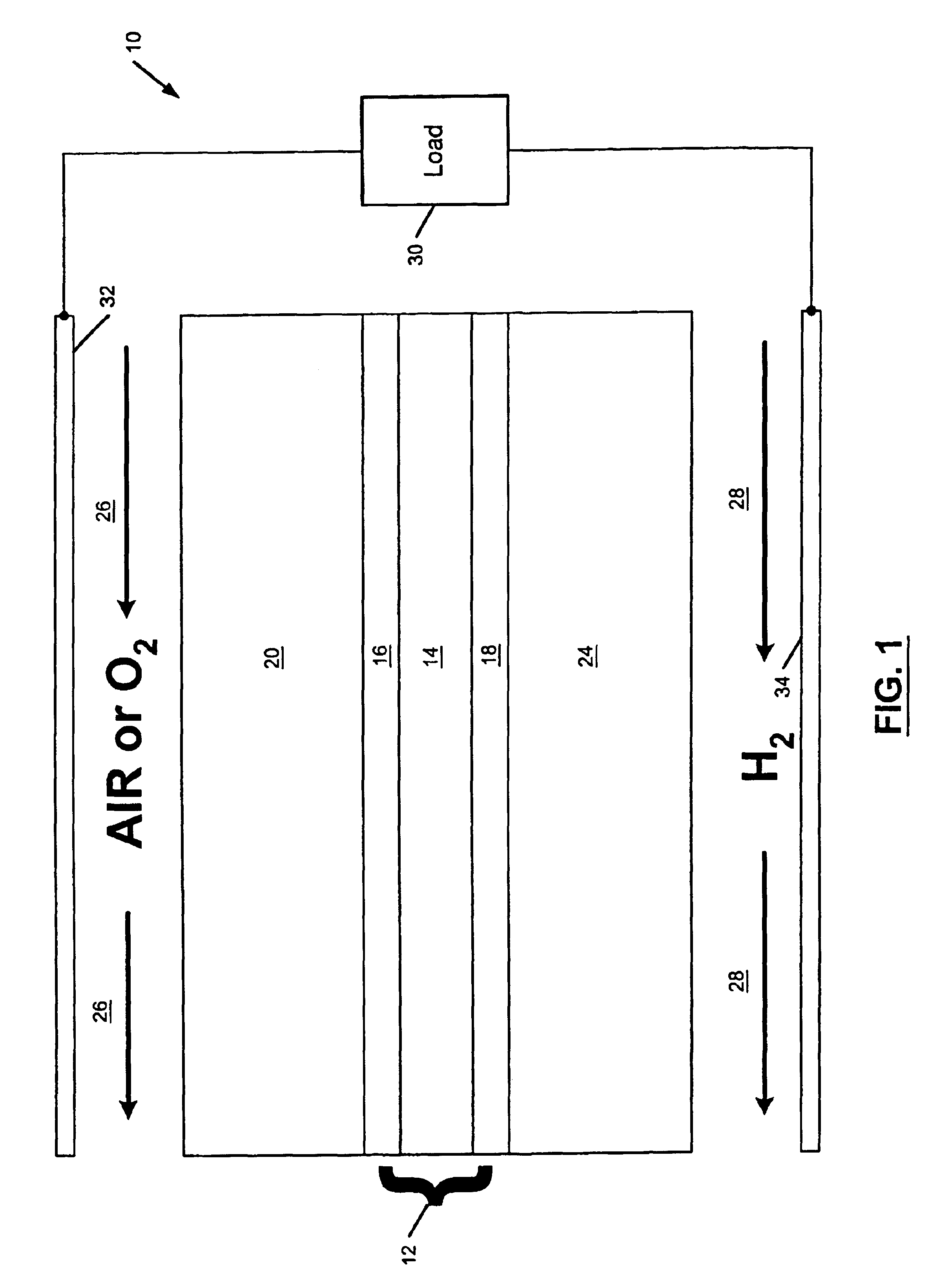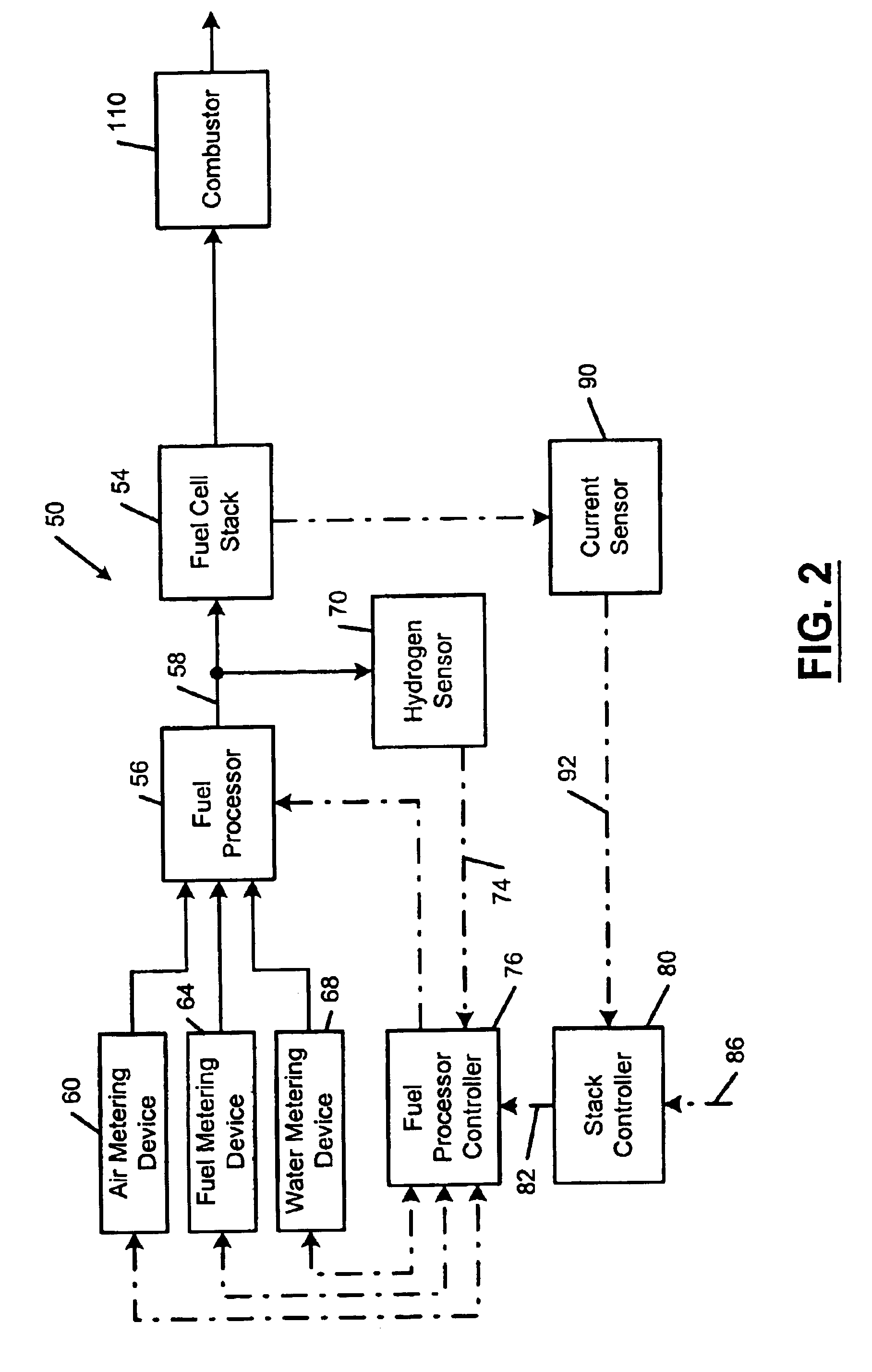Hydrogen sensor for fuel processors of a fuel cell
- Summary
- Abstract
- Description
- Claims
- Application Information
AI Technical Summary
Problems solved by technology
Method used
Image
Examples
Embodiment Construction
The following description of the preferred embodiment(s) is merely exemplary in nature and is in no way intended to limit the invention, its application, or uses.
Referring now to FIG. 1, a cross-section of a fuel cell assembly 10 that includes a membrane electrode assembly (MEA) 12 is shown. Preferably, the MEA 12 is a proton exchange membrane (PEM). The MEA 12 includes a membrane 14, a cathode 16, and an anode 18. The membrane 14 is sandwiched between the cathode 16 and the anode 18.
A cathode diffusion medium 20 is layered adjacent to the cathode 16 opposite the membrane 14. An anode diffusion medium 24 is layered adjacent to the anode 18 opposite the membrane 14. The fuel cell assembly 10 further includes a cathode flow channel 26 and anode flow channel 28. The cathode flow channel 26 receives and directs oxygen or air (O2) from a source to the cathode diffusion medium 20. The anode flow channel 28 receives and directs hydrogen (H2) from a source to the anode diffusion medium 24.
I...
PUM
| Property | Measurement | Unit |
|---|---|---|
| Concentration | aaaaa | aaaaa |
| Transport properties | aaaaa | aaaaa |
| Mass balance | aaaaa | aaaaa |
Abstract
Description
Claims
Application Information
 Login to View More
Login to View More - R&D
- Intellectual Property
- Life Sciences
- Materials
- Tech Scout
- Unparalleled Data Quality
- Higher Quality Content
- 60% Fewer Hallucinations
Browse by: Latest US Patents, China's latest patents, Technical Efficacy Thesaurus, Application Domain, Technology Topic, Popular Technical Reports.
© 2025 PatSnap. All rights reserved.Legal|Privacy policy|Modern Slavery Act Transparency Statement|Sitemap|About US| Contact US: help@patsnap.com



